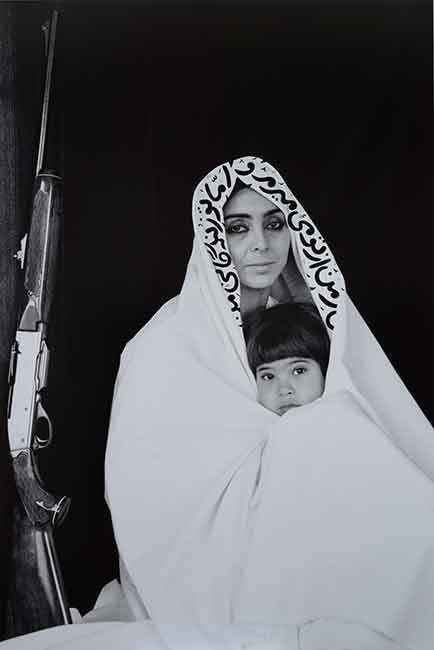As the area’s only teaching museum, the Rollins Museum of Art (formerly Cornell Fine Arts Museum) hosts a range of educational programs and visits for K–12 students throughout the year. Of those visits, the museum welcomes AP Art History high school students to test their art analysis skills outside classroom walls with a selection of works in the permanent collection.
APAH Course & CFAM Connections
The AP Art History course explores “the history of art across the globe from prehistory to the present” and “analyzes works of art through observation, discussion, reading, and research.” Students enrolled in the course study a list of 250 works of art to develop their visual literacy skills and ultimately gain a “holistic understanding of the history of art from a global perspective.”
A selection of works in the museum’s permanent collection connect to five of the 10 overarching content areas of the AP Art History list of 250 works. Visitors can encounter examples from the following content areas: Ancient Mediterranean, 3500 BCE-300 CE, Early Europe and Colonial Americas, 200-1750 CE, Later Europe and Americas, 1750-1980 CE, South, East, and Southeast Asia, 300 BCE-1980 CE, and Global Contemporary, 1980 CE to Present. To view the list of connected works please click here.

B&W RC print & ink
©Shirin Neshat (courtesy Barbara Gladstone Gallery, New York and Brussel)
If the works are not currently on view in the galleries, a selection of works can be pulled upon request for class visits in the museum’s print study room. Docent-guided visits, as well as self-guided visits, are available for scheduling during museum hours Tuesday–Thursday. Thanks to museum members, tours and programming are free in addition to free admission courtesy of PNC Bank.
Visual, Contextual, and Comparative Analysis Skills
Students are encouraged to suspend judgement, engage in deep examination, and appreciate the views of varying cultures while they simultaneously exercise “skills of visual, contextual, and comparative analysis.” The APAH exam challenges students to “describe a work of art beyond the image set and connect it to an artistic tradition, style, or practice” or to “attribute a work of art beyond the image set to a particular artist, culture, or style.” With a museum visit, students gain practical, in-person experience developing a theory about a work of art, defending their interpretation, and activating their analytical skills.

My Beloved, 1995
Silver gelatin print and ink
The Alfond Collection of Contemporary Art, Cornell Fine Arts Museum at Rollins College, Gift of Barbara ’68 and Theodore ’68 Alfond.
Image courtesy of the artist and Gladstone Gallery, New York and Brussels, 2015.1.49
For example, students have the opportunity to identify and analyze the photograph My Beloved by Shirin Neshat in the museum’s collection. The work serves as a great comparison to the artist’s photograph, Rebellious Silence, on the AP Art History list. These works derive from Neshat’s Women of Allah series that explores themes of women’s identities and representations, the complexities of East and West, and modes of beauty and violence during the shifting cultural landscape of the Middle East in the 1990s. Students examine the visual similarities and differences between the works. There are similarities in the black and white aesthetic, the gaze of the sitter, and the presence of the gun, veil, and Farsi while there are differences in the compositional arrangement and gesture and pose of the sitter, among others. Through a deep visual and comparative analysis, students then draw conclusions of how these visual elements link to the conceptualization and contextualization of Neshat’s works.
Benefits of a Museum Trip
Teachers, students, and museum professionals on a local and national scale attest to the lasting impact of museum visits.
- “There is no doubt a field trip to a great location is a win-win-win. Students make memories and learn new things, teachers cover the curriculum in a unique and fun way, and museums gain the attention of young people and their families who are engaged and interested in what they have to offer.”— Claudia Bartow, Teacher, Fairbanks Local Schools
- “I am convinced that museums and schools partnering more cohesively in communities across the country is an absolute must – for museums to be seen as essential, for over-stretched schools and teachers to be more effective – and for our kids to be successful.”— Laura L. Lott, President & CEO of the American Alliance of Museums
- “The kids were so excited that we spent the entire class the following day processing the experience. It is not an exaggeration to say that this as a life-changing event for some of them.”— Cathy Payne, Teacher, Winter Park
- “Our catch phrase during lunch was: ‘best day ever.’ While that may be somewhat hyperbolic, the feeling was sincere. We were blissed out after that incredible exhibition at Cornell, the amazing atmosphere and art at Alfond, and a lovely experience on campus walking around on a beautiful day… opening up your print room felt like such a special and unique experience for our kids. They like to play things cool, but I know that will be an experience that stays with them for a lifetime.” — Michael Levin, Teacher, Winter Park
Interested in scheduling a transformative art encounter for your class? Please contact the Education Department.
1 “AP Art History: About the Course” The College Board 2019. https://apstudents.collegeboard.org/courses/ap-art-history
2 “AP Art History: Course and Exam Description” The College Board 2019. https://apcentral.collegeboard.org/pdf/ap-art-history-course-and-exam-description.pdf.
3 Marsha Russell, “AP Art History: The Keystone in the High School Curriculum.” College Board 2019. https://apcentral.collegeboard.org/courses/ap-art-history/classroom-resources/ap-art-history-keystone-high-school-curriculum?course=ap-art-history And Michael Bieze, “The Meaningful Walk and the AP Art History Course.” The College Board 2019.
4 “AP Art History: Course and Exam Description” The College Board 2019.
5 “AP Art History: About the Exam” The College Board 2019. https://apstudents.collegeboard.org/courses/ap-art-history/assessment
6 Claudia Bartow, “From a Teacher: How to make your museum field trips ones to remember for students and staff.” AAM February 29, 2019.
7 Laura L. Lott “Museums are more than a Year-End Field Trip” AAM May 7, 2018. https://www.aam-us.org/2018/05/07/museums-are-more-than-a-year-end-field-trip/

